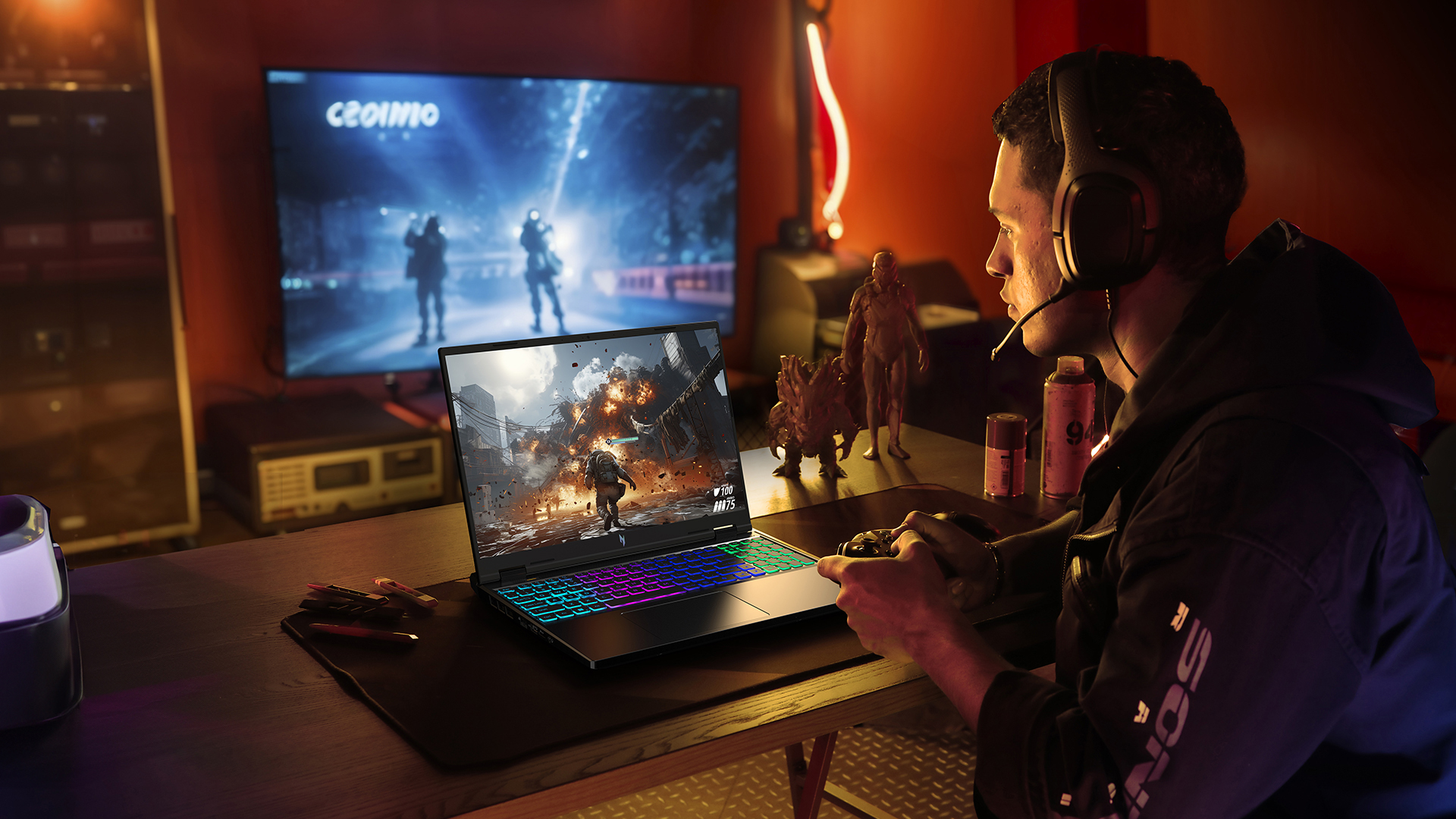
Acer has expanded its gaming laptop lineup with the launch of several new models, including the Predator Helios Neo 14, an updated Acer Nitro 16, and the introduction of the Nitro 14 and Nitro 16 laptops.
These new offerings are designed to cater to both gamers and creators, featuring the latest in processing and graphics technology, alongside AI-enhanced capabilities for an optimized user experience.
The new Predator Helios Neo 14 looks to be a portable yet powerful gaming laptop, boasting Intel Core Ultra processors and NVIDIA GeForce RTX 4070 laptop graphics cards, along with a WQXGA (3072x1920) display with a 165Hz refresh rate, 100% sRGB color gamut support, and Nvidia G-Sync compatibility. The Nitro 16, meanwhile is getting refreshed with a 14th-gen Intel Core i7-14700HX processor and up to an RTX 4060 GPU.
Acer says that its enhanced thermal management systems, including a dual-fan setup and liquid metal thermal paste, ensure optimal performance during intensive use.
At the other end of the spectrum, the Nitro series welcomes two new models powered by AMD Ryzen™ 8040 Series processors, with the Nitro 14 and Nitro 16 both supporting Nvidia RTX 4060 GPUs. These laptops aim to provide immersive gaming experiences through their Nvidia G-Sync compatible panels and Acer PurifiedVoice 2.0 and Acer PurifiedView software to enhance voice chat and game streaming. Both Nitro models with AMD Ryzen 8040-series chips will also feature Microsoft Copilot in Windows.
All the models will launch in May this year, with the Acer Predator Helios Neo 14 having a base price of $1,799, the Acer Nitro 16 beginning at $1,399.99 (both Intel Core i7-14700HX and AMD Ryzen 8040-series CPU models), while the Nitro 14 with AMD 8040-series chips will start at $1,299.99.
More AI capable PCs inbound, but are they worth it?
Acer isn't the only company to offer refreshed laptops with new AI-powered chips. With the launch of Intel's Meteor Lake CPUs and AMD's Ryzen 8040-series processors, laptops of all stripes will now have a powerful new tool for AI-enhanced workloads.
However, the hype around these chips can often be out of proportion, as most AI applications people might want to dabble in, such as custom chatbots or image generators, require way more resources and technology than an onboard Neural Processing Unit (NPU) from either Intel or AMD would be capable of.
These kinds of heavy-duty workloads normally require the best graphics card possible - often more than one - in order to properly train models locally. So for most AI applications that people will actually use, you will still have to use cloud processing like that found in OpenAI's ChatGPT and Dall-E.
What you will be able to do though is leverage this new AI hardware for more quality-of-life improvements, like better background blurring during video calls, image editing and photo touchups, and microphone noise canceling. None of these are insignificant improvements, and these new chips are definitely going to help a lot of people with their day-to-day tasks. Just don't expect a miracle from them.
You might also like...
- Acer Swift X14 review: a powerhouse machine with Ultrabook looks
- What is an NPU: the new AI chips explained
- These are the best gaming laptops of 2024







